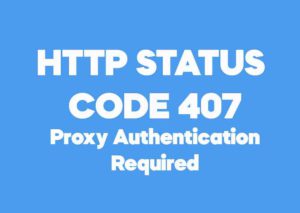In the world of investing, keeping track of your portfolio is essential for making informed decisions and maximizing your returns. Two common methods for portfolio tracking are using dedicated portfolio tracking software and manually maintaining a spreadsheet. Both approaches have their advantages and disadvantages. In this post, we will explore the pros and cons of portfolio tracking using software and manual spreadsheets, helping you decide which method is best suited for your needs.
Portfolio Tracking Software
Portfolio tracking software offers a range of benefits for investors. One of the main advantages is automation. With dedicated software like the Prillionaires portfolio tracker, you can easily connect your brokerage accounts and have real-time access to your portfolio’s performance. This automation saves you time and effort, as the software automatically updates your portfolio’s value and provides detailed analytics and performance reports.
Another significant advantage of portfolio tracking software is its user-friendly interface. Most software platforms offer intuitive dashboards and customizable features, making it easy to navigate and visualize your portfolio’s data. This accessibility allows you to quickly analyze your investments, identify trends, and make informed decisions.
Additionally, portfolio tracking software often provides advanced features like tax optimization, risk assessment, and asset allocation suggestions. These tools can help you optimize your portfolio’s performance and minimize risk, giving you a competitive edge in the market.
However, it’s important to consider the potential drawbacks of using portfolio tracking software. One of the main concerns is cost. While some software platforms offer free versions, many advanced features and functionalities are only available through paid subscriptions. Depending on your investment goals and budget, the cost of these subscriptions may outweigh the benefits.
Furthermore, relying on portfolio tracking software means putting your trust in a third-party provider. This can be a concern for those who prioritize data privacy and security. It’s crucial to thoroughly research and select a reputable and secure software provider to protect your sensitive financial information.
Manual Spreadsheet
For those who prefer a more hands-on approach, maintaining a manual spreadsheet for portfolio tracking can be a viable option. One of the significant advantages of using a spreadsheet is its flexibility and customization. You have complete control over the layout, formulas, and calculations, allowing you to tailor the spreadsheet to your specific needs and preferences.
Another advantage of a manual spreadsheet is its cost-effectiveness. Unlike portfolio tracking software, spreadsheets are typically free and readily available on programs like Microsoft Excel or Google Sheets. This affordability makes it an attractive option for investors on a tight budget.
Additionally, using a spreadsheet gives you a deeper understanding of your portfolio’s data. By manually inputting and calculating your investment data, you develop a closer relationship with your investments and gain valuable insights into your portfolio’s performance.
However, manual spreadsheet tracking also has its limitations. One of the main drawbacks is the time and effort required to input and update data manually. Unlike portfolio tracking software, a manual spreadsheet does not offer real-time updates, and you must diligently update it with accurate information. This can be time-consuming, especially for investors with a large and diverse portfolio.
Another concern is the potential for human error. With manual data entry and calculations, there is a higher risk of making mistakes that can impact your portfolio’s accuracy and performance analysis. It’s crucial to double-check your inputs and formulas to minimize errors and ensure reliable tracking.
Conclusion
When it comes to portfolio tracking, both dedicated software and manual spreadsheets have their pros and cons. Portfolio tracking software offers automation, user-friendly interfaces, and advanced features but comes with a cost and potential security concerns. On the other hand, manual spreadsheets provide flexibility, customization, and affordability but require time and effort for data entry and carry a higher risk of human error.
Ultimately, the best method for portfolio tracking depends on your individual preferences, investment goals, and available resources. Consider the advantages and disadvantages outlined in this blog post and choose the method that aligns with your needs and priorities. Whichever approach you choose, effective portfolio tracking is key to successful investing and maximizing your returns.




Be First to Comment